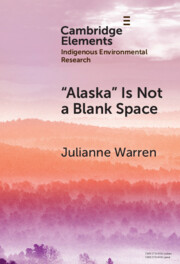Refine search
Actions for selected content:
3387661 results

Iran's Strategic Thinking
- The Evolution of Iran's Foreign Policy, 1979-2018
-
- Published by:
- Gerlach Books
- Published online:
- 28 August 2025
- Print publication:
- 01 June 2018

Black Catholic Worlds
- Religious Geographies of Eighteenth-Century Afro-Colombia
-
- Published online:
- 28 August 2025
- Print publication:
- 11 September 2025

‘Alaska’ is Not a Blank Space
- Unsettling Aldo Leopold's Odyssey
-
- Published online:
- 28 August 2025
- Print publication:
- 25 September 2025
-
- Element
- Export citation
The Theology of Fear in Thomas Aquinas’s Summa Theologiae by Nathan Luis Cartagena, Lexington Books, Lanham, 2024, pp. xxvii + 169, £81.00, hbk.
-
- Journal:
- New Blackfriars ,
- Published online by Cambridge University Press:
- 28 August 2025, pp. 1-2
-
- Article
- Export citation
1 - Punishment Is Part of Tort Law
- from Part I - The Place of Punishment in Torts
-
- Book:
- Torts and Retribution
- Published online:
- 09 August 2025
- Print publication:
- 28 August 2025, pp 21-49
-
- Chapter
- Export citation
5 - Right of Publicity and Deepfakes
- from Part II - Hot Topics in AI and IP
-
- Book:
- AI versus IP
- Published online:
- 09 August 2025
- Print publication:
- 28 August 2025, pp 68-72
-
- Chapter
- Export citation
3 - The Right Not To Be Manipulated
- from Part I - Theory
-
- Book:
- Manipulation
- Published online:
- 28 August 2025
- Print publication:
- 28 August 2025, pp 50-68
-
- Chapter
- Export citation
10 - Communication leadership
- from Part 3 - Engages Others
-
-
- Book:
- Leading and Managing Health Services
- Published online:
- 15 August 2025
- Print publication:
- 28 August 2025, pp 110-121
-
- Chapter
- Export citation
A new xandarellid euarthropod from the lower Cambrian Emu Bay Shale, South Australia
-
- Journal:
- Journal of Paleontology , First View
- Published online by Cambridge University Press:
- 28 August 2025, pp. 1-9
-
- Article
- Export citation
4 - How Urban Systems Change
- from Part I - Framing Chapters
-
- Book:
- Cities and Environmental Change
- Published online:
- 15 August 2025
- Print publication:
- 28 August 2025, pp 58-86
-
- Chapter
- Export citation
6 - The Barbie Problem: Manipulated by Social Pressure
- from Part II - Applications
-
- Book:
- Manipulation
- Published online:
- 28 August 2025
- Print publication:
- 28 August 2025, pp 106-124
-
- Chapter
- Export citation
Hugh Miller, with Michael A. Taylor and Ralph O’Connor (eds.), The Old Red Sandstone, or New Walks in an Old Field - Edinburgh: National Museums Scotland, 2022, 2 vols. Pp. 303 + 334. ISBN 978-1-910682-25-8. £30.00 (paperback).
-
- Journal:
- The British Journal for the History of Science , First View
- Published online by Cambridge University Press:
- 28 August 2025, pp. 1-2
-
- Article
-
- You have access
- HTML
- Export citation
Nothing Matters
-
- Journal:
- Philosophy of Science / Accepted manuscript
- Published online by Cambridge University Press:
- 28 August 2025, pp. 1-11
-
- Article
-
- You have access
- Export citation
7 - Ambiguity and leadership
- from Part 2 - Leads Self
-
-
- Book:
- Leading and Managing Health Services
- Published online:
- 15 August 2025
- Print publication:
- 28 August 2025, pp 77-86
-
- Chapter
- Export citation
DISTAL EXPANSIONS OF PRESBURGER ARITHMETIC BY A SPARSE PREDICATE
-
- Journal:
- The Journal of Symbolic Logic / Accepted manuscript
- Published online by Cambridge University Press:
- 28 August 2025, pp. 1-26
-
- Article
- Export citation
Chapter 2 - Writing between the Lines
-
- Book:
- Railway Infrastructure and the Victorian Novel
- Published online:
- 12 August 2025
- Print publication:
- 28 August 2025, pp 45-69
-
- Chapter
- Export citation
Key predictors of prolonged overall treatment time in head and neck cancer radiotherapy
-
- Journal:
- Journal of Radiotherapy in Practice / Volume 24 / 2025
- Published online by Cambridge University Press:
- 28 August 2025, e37
-
- Article
-
- You have access
- Open access
- HTML
- Export citation
9 - Artificial Intelligence: Promise and Threat
- from Part III - The Future
-
- Book:
- Manipulation
- Published online:
- 28 August 2025
- Print publication:
- 28 August 2025, pp 164-195
-
- Chapter
- Export citation
Determination of the characteristic length of electrosprays operating in the cone-jet mode
-
- Journal:
- Journal of Fluid Mechanics / Volume 1018 / 10 September 2025
- Published online by Cambridge University Press:
- 28 August 2025, A5
-
- Article
-
- You have access
- Open access
- HTML
- Export citation
Subject Index
-
- Book:
- Kant and the Supposed Right to Lie
- Published online:
- 18 July 2025
- Print publication:
- 28 August 2025, pp 215-216
-
- Chapter
- Export citation






